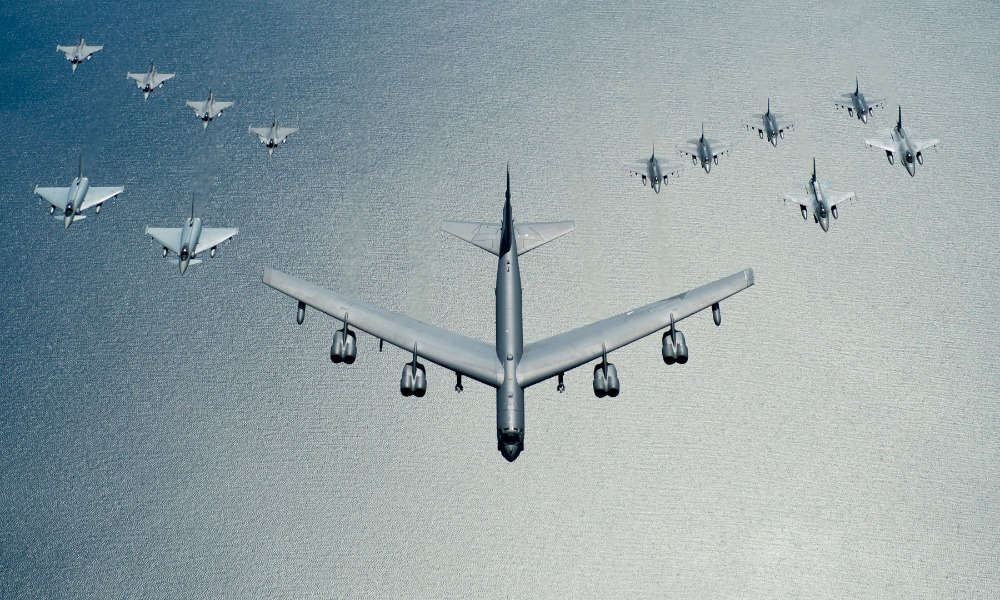US sends more warplanes to protect troop withdrawal

Washington has deployed a dozen additional warplanes to bolster protection of American and coalition troops making a final withdrawal from Afghanistan as Taliban insurgents step up pressure on Afghan government forces, top Pentagon officials said Thursday.
AP reported that General Mark Milley, chairman of the Joint Chiefs of Staff, said F-18 attack planes have been added to a previously announced package of air and sea power — including the USS Dwight D. Eisenhower aircraft carrier in the North Arabian Sea and six Air Force B-52 bombers based in Qatar.
Also, several hundred Army Rangers have also been deployed to Afghanistan as part of the support package.
“There continue to be sustained levels of violent attacks” by the Taliban against Afghan security forces, Milley said, speaking alongside Defense Secretary Lloyd Austin at a Pentagon news conference.
However, he said there have been no attacks against U.S. or coalition forces since they began pulling out of the country on May 1, and he described the Afghan forces as “cohesive,” even as speculation swirls around Kabul’s ability to hold off the Taliban in the months ahead.
“They’re fighting for their own country now, so it’s not a foregone conclusion, in my professional military estimate, that the Taliban automatically win and Kabul falls, or any of those kinds of dire predictions,” Milley said.
“That’s not a foregone conclusion. There’s a significant military capability in the Afghan government. We have to see how this plays out.”
Milley said the Pentagon is considering options for continued support of Afghan government forces after the troop withdrawal is complete, including possibly training Afghan security forces in another country, AP reported.
That would be in addition to urging the Congress to authorize continued financial assistance to the Afghan forces, which has been in the range of $4 billion a year for many years, and possibly providing aircraft maintenance support remotely from another country.
“We haven’t figured that out 100% yet,” Milley said.
Milley said Afghanistan’s air force is central to the strategy for holding off the Taliban, but the durability of those planes is in some doubt.
The U.S. Special Inspector General for Afghanistan Reconstruction said in an April 30 report that without continued foreign contractor support, none of the Afghan air force’s airframes can be sustained as combat effective for more than a few months.
Austin acknowledged that holding off the Taliban without American support on the ground “will be a challenge” for the Afghans.
“We’re hopeful that the Afghan security forces will play a major role in stopping the Taliban,” Austin said. “What we’re seeing unfold is what we expected to unfold — increased pressure” on the Afghan forces.
He confirmed that government forces launched a counterattack this week against the Taliban in Lashkargah, the capital of Helmand province, and that they were “performing fairly well.”
